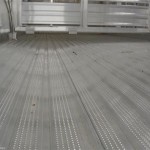Heated Flooring Systems: Essential Aspects to Consider When Installing a Water-Based System
Heated flooring systems powered by water provide a comfortable and energy-efficient way to warm your home. These systems involve circulating warm water through pipes embedded in the floor, evenly distributing heat throughout the room. Installing a water-based heated flooring system requires careful planning and consideration of various aspects to ensure optimal performance and longevity.
1. System Design and Heat Zoning:
The design of the heating system should consider the size, shape, and layout of the room. Divide the room into heat zones, with each zone containing a separate loop of piping. This allows for precise temperature control and efficient heat distribution.
2. Subfloor Preparation:
Ensure the subfloor is level and free of debris. It should be able to support the weight of the flooring and heating system. A layer of insulation beneath the pipes helps prevent heat loss and improves energy efficiency.
3. Pipe Material and Layout:
Choose piping material, such as cross-linked polyethylene (PEX), that is durable, flexible, and resistant to corrosion. The piping layout should maximize heat coverage and avoid sharp bends or kinks that could restrict water flow.
4. Manifold and Controls:
A manifold connects the piping loops to the water supply and control system. Install a thermostat or other control device to adjust the temperature of the circulating water based on your desired heating level.
5. Floor Covering:
Select flooring materials compatible with heated flooring systems. Tiles, natural stone, and engineered hardwood are suitable options that allow heat to transmit effectively. Carpet and rugs may require additional considerations to ensure proper heat distribution.
6. Water Pressure and Temperature:
Maintain adequate water pressure in the system to ensure proper circulation. The water temperature should be set according to the flooring manufacturer's recommendations to prevent damage or discomfort.
7. Professional Installation:
Heated flooring systems require specialized knowledge and skills to install correctly. Hiring a qualified HVAC contractor ensures the system is designed, installed, and commissioned to perform at its best.
8. Maintenance and Inspection:
Regular maintenance and inspection of the system are crucial for its longevity and efficiency. Check for leaks, air pockets, or any other issues that may affect its performance. Consider having the system inspected by a professional periodically.
By considering these essential aspects when installing a water-based heated flooring system, you can create a comfortable and energy-efficient heating solution for your home that will provide years of warmth and enjoyment.

Radiant Heating Department Of Energy

Underfloor Heating Water Based Systems Build It

Slab Heating Solar Hydronics

Hydronic Heated Floors Radiant Floor Heating Systems Warmzone

What You Don T Know About Underfloor Heating Systems Plastmax

Hydronic Radiant Floor Heating Systems Pros Cons Types Cost Water Heater Hub

Floor Heating Cky Radiant Floors Underfloor Installation Heated Flooring Hydronic Contractors

Water Underfloor Heating Installation Edinburgh Glasgow Scotland

Champion Heating

Radiant Floor Heating Why It S Worth Hydronic Systems
Related Posts








